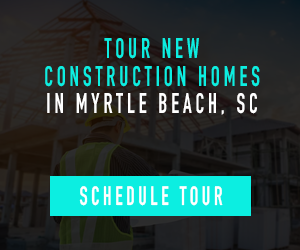
The world of logistics is highly dynamic, which is why companies face increasing pressure to meet customer demands with speed, reliability, and efficiency. As supply chains grow more complex, traditional methods of routing and delivery are no longer enough to keep up. This is where advanced route planning comes into play, offering businesses a competitive edge in managing their supply chain operations more effectively.
Advanced routing planning software is becoming an essential tool for optimizing delivery performance. Whether it’s reducing costs, improving fleet utilization, or ensuring timely deliveries, businesses can benefit from integrating routing strategies across multiple facets of their supply chain. This blog explores how these innovations are reshaping the logistics landscape and how they can enhance supply chain operations.
The Challenges with Traditional Routing Methods
Traditional routing methods, often relying on manual planning or outdated software, struggle to keep pace with the complexities of modern logistics. These methods tend to be inflexible, time-consuming, and prone to human error, resulting in inefficient routes and missed opportunities for optimization.
Key challenges include:
- Limited Visibility: Traditional routing offers minimal real-time tracking, making it difficult to adjust routes on the fly in response to traffic, weather, or unforeseen delays.
- Inefficient Fleet Utilization: Without intelligent planning, fleets often run underutilized, leading to empty miles, increased fuel consumption, and higher operational costs.
- Inaccurate Delivery Timelines: Relying on historical data without factoring in real-time variables can lead to inaccurate delivery time predictions, impacting customer satisfaction.
- Scalability Issues: As businesses grow and their delivery needs become more complex, traditional methods struggle to scale effectively, often resulting in bottlenecks and inefficiencies.
The Importance of Routing in Supply Chains
The evolution of route planning technologies comes at a time when businesses must handle increasing customer expectations and logistical challenges. To stay ahead, companies need to incorporate intelligent routing systems that can manage multiple variables, such as delivery timeframes, regulatory requirements, road conditions, and vehicle types.
Traditional, manual routing methods often fall short of addressing these complexities. Advanced routing leverages real-time data, artificial intelligence (AI), and machine learning (ML) to optimize every aspect of the delivery journey.
When businesses embrace routing planning, they gain the ability to:
- Optimize routes based on a variety of constraints.
- Improve fleet and resource utilization.
- Achieve greater operational efficiency.
- Provide better service to customers with more accurate delivery times.
Advanced route planning solutions can transform three key areas of the supply chain: truck routing, parcel routing, and hyperlocal deliveries.
Revolutionizing Truck Routing for Better Fleet Utilization
Truck routing is a critical component of the logistics ecosystem, especially for businesses handling large shipments, long-haul deliveries, and fleet management. Efficient truck routing enables businesses to optimize fleet use, reduce empty backhauls, and ensure timely deliveries while complying with regulatory standards.
Full-truckload (FTL) and Less-than-Truckload (LTL) Routing
For Full-Truckload (FTL) and Less-than-Truckload (LTL) shipments, routing solutions provide the flexibility to plan and execute efficient routes. Here’s how:
- FTL Routing
Multi-day route planning enables businesses to consider delivery timeframes, driver work hours, and vehicle availability. By incorporating working hour compliance and regulations into the route planning process, businesses can avoid costly delays and non-compliance fines while ensuring on-time deliveries.
For dedicated or captive fleets, truck route optimization enhances vehicle utilization, reducing idle times and maximizing each truck’s capacity. In addition, FTL routing supports sustainability efforts by minimizing empty miles, reducing fuel consumption, and lowering the overall carbon footprint of fleet operations.
- LTL Routing
With LTL routing, businesses can consolidate multiple shipments that are heading in the same direction into a single truckload. This method helps reduce fuel consumption and improves cost efficiency. By optimizing multi-stop routes, companies can ensure timely delivery while minimizing transit times.
From a sustainability standpoint, LTL routing reduces the number of trucks on the road, contributing to lower emissions and a more sustainable approach to logistics.
Multi-constraint Truck Routing
Due to the complex nature of logistics, it’s crucial to account for multiple constraints during route planning. Advanced systems factor in:
- Order Constraints: Weight, dimensions, and delivery windows.
- Vehicle Constraints: Vehicle types, dimensions, and road restrictions.
- Driver Constraints: Compliance with working hours, necessary rest stops, and shift patterns.
Incorporating sustainability into multi-constraint truck routing solutions ensures that these systems not only optimize for time, compliance, and efficiency but also take into account environmental factors. This includes optimizing for fuel efficiency, reducing emissions, and utilizing electric or low-emission vehicles where possible.
Advanced truck routing planning solutions are designed to handle these multiple parameters simultaneously, ensuring that routes are optimized for both time and sustainability, ultimately improving fleet efficiency while reducing the environmental impact.
Parcel Routing: Ensuring Speed and Efficiency
Parcel routing is at the core of modern-day deliveries, especially with the rise of e-commerce. Businesses need to deliver packages quickly, securely, and cost-effectively, particularly for same-day and next-day deliveries. Advanced parcel routing solutions enable businesses to streamline their operations and improve customer satisfaction by ensuring that deliveries are made within the promised time frames.
The Impact of Advanced Parcel Routing
Parcel routing is all about maximizing efficiency and speed while minimizing costs. Key benefits include:
- Faster Order Processing: With automation, businesses can process thousands of orders in just a few minutes, enabling dispatchers to assign deliveries quickly and efficiently.
- Maximized Stops per Hour: By optimizing delivery routes, parcel routing systems ensure that drivers can make more stops per hour, increasing delivery capacity and reducing operational costs.
- Real-time Dynamic Routing: Changes in traffic conditions, weather, and other external factors can be factored into the routing system in real time, ensuring that routes are constantly updated to avoid delays.
Benefits for High-volume Deliveries
Parcel routing is particularly beneficial when handling large volumes of deliveries. Businesses can leverage parcel routing to:
- Reduce Dispatch Time: Automated systems handle route planning, cutting down the time spent by dispatchers in assigning orders to drivers.
- Increase Resource Utilization: Dispatchers can manage ad-hoc orders more effectively and assign them dynamically to available drivers, improving the overall resource utilization of the fleet.
- Enhance Same-day Deliveries: For time-sensitive parcels, real-time dynamic routing ensures that deliveries are made within tight SLAs, enabling businesses to offer a reliable and fast service.
Hyperlocal Routing: Meeting the Demands of Perishable Goods
Hyperlocal delivery is becoming increasingly important, particularly for businesses that handle perishable goods like food, medicines, and groceries. These industries require tight delivery windows and guaranteed delivery times. Advanced hyperlocal routing planning helps businesses meet these demands by optimizing deliveries for short distances, ensuring on-time deliveries, and reducing costs.
Key Features of Hyperlocal Routing
- Real-time Routing: Hyperlocal deliveries require constant adjustments to routes based on real-time data such as traffic, road closures, and order changes. Real-time dynamic routing helps businesses avoid delays and ensure on-time delivery.
- Order Allocation: By balancing orders between gig and owned drivers, businesses can maximize efficiency while keeping costs under control. Data-driven decisions help dispatchers allocate orders to the right drivers based on their proximity, availability, and delivery capacity.
- Optimization of Stops per Hour: The goal of hyperlocal routing is to maximize the number of deliveries a driver can make within a specific time window. By optimizing the route, businesses ensure that drivers are used effectively, reducing idle time and increasing capacity.
Enhancing Delivery of Perishables
In industries dealing with perishable goods, such as food delivery, hyperlocal routing plays a critical role. For example:
- Temperature Control: Ensuring the right temperature for perishable goods is crucial. Hyperlocal routing systems allow businesses to manage the specific needs of perishable deliveries.
- Tight Service Level Agreements (SLAs): Hyperlocal routing ensures that deliveries are made on time, allowing businesses to meet tight SLAs, which is essential for food, pharmaceutical, and grocery deliveries.
The Power of Real-time Dynamic Routing in Modern Logistics
As consumer expectations continue to rise and logistics become more complex, businesses must embrace advanced routing technologies to stay competitive. Whether it’s improving fleet utilization with truck routing, streamlining operations for parcels, or meeting the demands of hyperlocal deliveries, routing planning plays a vital role in transforming supply chain operations.
By adopting integrated solutions that optimize truck, parcel, and hyperlocal routing, businesses can achieve significant cost savings, increase efficiency, and ensure timely deliveries. With real-time dynamic routing, data-driven decision-making, and a focus on customer satisfaction, routing is revolutionizing the supply chain industry.
To stay ahead of the competition and provide exceptional service, businesses should partner with technology providers such as FarEye that offer advanced routing planning solutions tailored to their specific needs. The future of logistics is here, and it’s driven by intelligent routing planning.
Local News Via - MyrtleBeachSC.com









